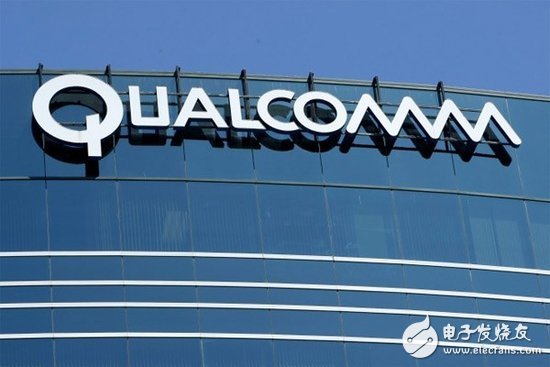Beijing time, February 28 , according to foreign media reports, since mobile chip manufacturer Qualcomm acquired some assets of ultrasonic positioning technology manufacturer EPOS in November 2012, the development of ultrasonic technology on smart devices has become Qualcomm's current focus .
Qualcomm has been constantly adding new features to its chips, which makes Qualcomm chips run faster than other chips, and Qualcomm has gained more market share. Just last year, Qualcomm ’s LTE Snapdragon processor enabled the company to account for 48% of the revenue share in the first half of 2012 and pushed more LTE devices into the market. At the same time, the chip also promoted the development of 4G technology.

In November last year, Qualcomm acquired part of the assets of the Israeli company EPOS, which developed digital ultrasound technology. Ultrasound and consumer electronics products do not seem to be related, but it is clear that Qualcomm believes that this technology can further improve the performance of its chips, mainly due to the technology can bring a new user interface for smart devices-stylus input interface And non-touch interface, such as gesture control.
Raj Talluri, senior vice president of product management at Qualcomm, talked about Qualcomm ’s interest in ultrasound technology at the Mobile World Congress in Barcelona. He explained that this technology can be applied to mobile devices by placing an ultrasonic transmitter on the stylus. Through the microphone on the mobile device, the mobile device can detect the position of the pen.
Samsung has configured a capacitive stylus for its Galaxy Note, a smart hybrid device, but Taluri said that a stylus with ultrasonic capabilities will be more powerful. For example, this type of stylus can be used in an off-screen state, that is, the mobile phone can detect input outside the screen of the mobile phone.
"We are working hard to bring this type of stylus to the market. Compared with capacitive pens, this pen is more powerful in many ways. For example, when you write next to a mobile phone, it can detect the position of the pen. Suppose you have A paper notebook, and a mobile phone next to it, then what you write on the notebook will be transcribed into the mobile phone to form text. This is mainly because the citation ultrasound can continuously adjust at an appropriate distance. "
In addition, by installing an ultrasonic transmitter on a mobile device, this technology can also support gesture-based interaction. "There are many examples of using ultrasound," Taluri said. "You can install a small ultrasonic transmitter on one end of the phone screen, and then slide on the top of the screen to be able to control it with gestures."
"Ultrasonic technology can be applied to many different fields. So we are working hard to develop this technology, hoping that we can make commercial products using ultrasonic technology."
Taluri did not give a specific schedule for applying this technology to Qualcomm chips, nor did it specify which equipment manufacturer Qualcomm is currently working with. "We have not officially announced it to the outside world. Obviously, we still have a lot of work to do. We are working hard on research and development," he said. "We are very interested in this technology, which is why we want to buy this company."
Taluri said Qualcomm is currently trying to use this technology on smartphones and tablets, but he also said that the technology can be applied to "any device"-including wearable devices such as Google (microblogging) glasses.
In addition, the use of this technology does not necessarily need to cooperate with the new microphone, which allows those accessories that can be retrofitted with ultrasonic equipment to use this technology on existing equipment.
"Another benefit is that we found that the microphones on some existing mobile devices can also detect ultrasound, so devices without special microphones can also allow you to experience this technology. Ultrasound has many other interesting uses. What you need It ’s just a sender, â€Taluri said.
When talking about the future development trend of mobile chips, Taluri said that his concern is to integrate various chip elements to make it work better, rather than simply increase the number of cores of the chip.
"We think the next generation of innovation is likely to be more in heterogeneous computing. At present, many mobile phones are equipped with CPU, GPU (graphics processor), video engine, audio engine, camera and security module, but they Only one thing can be done in a certain period of time. "
"And heterogeneous computing refers to the ability of each module to complete other tasks, which is what I think of the future development trend of the system-on-chip (SOC). How can the advantages of silicon be used to make it possible in the module Completing multiple tasks instead of only one thing in a period of time is well worth studying. I think it makes more sense than just increasing the number of cores in the chip. "
The 10KV/11KV medium voltage variable speed drives are mainly used to drive various high-voltage motors, such as power stations, metallurgical industry, petrochemical, cement manufacturing, water supply and sewage treatment, mining, papermaking, etc. FGI`s high voltage drives adopt modular design, multi-stage power unit series technology, with low input harmonic content and high power factor. The Medium Voltage Inverter is small in size, easy to install and debug, and easy to maintain.
10Kv And 11Kv Medium Voltage Drives
Vfd Inverter,High Voltage Inverter,High Voltage Power Inverter,10Kv And 11Kv Medium Voltage Drives,High Watt Voltage Converter,Medium Voltage VFD Specification
FGI SCIENCE AND TECHNOLOGY CO., LTD , https://www.fgi-tech.com